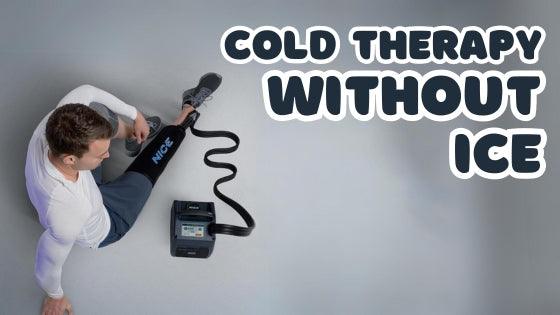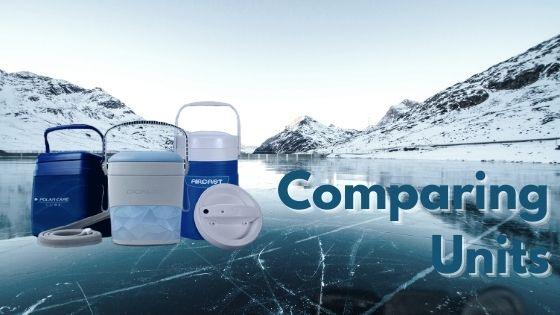Best Cold Therapy for Shoulder Injury: A Patient’s Guide

Recover Faster from a Shoulder w/ Cold Therapy
Shoulder pain can turn simple daily activities—like lifting, reaching, or even getting dressed—into painful challenges. While it may seem natural to limit movement in a sore shoulder, keeping it completely still can actually worsen stiffness and increase your risk of developing a frozen shoulder. One of the most effective ways to manage discomfort and promote healing, especially during the early stages of an injury or after surgery, is cold therapy.
Also known as cryotherapy, cold therapy helps reduce inflammation, relieve pain, and support faster tissue recovery. Applying cold therapy immediately after a shoulder injury or surgical procedure can make a significant difference in your recovery. The first few hours after an injury are especially important—this is when your body’s inflammatory response is most active, often leading to swelling and discomfort. Starting cold therapy early can minimize those effects and help you heal more efficiently.
In this in-depth guide, you'll learn:
-
How to apply cold therapy safely to your shoulder
-
Different methods and devices (e.g. cold packs vs. cold therapy machines)
-
Advantages and limitations of each method
-
Key precautions to protect your skin and tissues
-
How to choose the right cold therapy system for your needs
Let’s dive in and help you get relief—smartly and safely.
How to Apply Cold Therapy on the Shoulder
Timing & Duration
-
Apply cold therapy as soon as possible after injury or surgery—ideally within the first few hours.
-
Use cold therapy for the initial 72 hours, when inflammation is most active. After that, continue only if swelling persists (and with your provider’s guidance).
-
Use cold in 10–20 minute intervals, several times a day.
Technique Tips
-
Never apply ice directly to your skin. Always place a thin barrier—like a towel or cloth—between the cold source and the skin.
-
Keep the cold wrap or device firm but not tight—you shouldn't cut off circulation.
-
Check the treated area regularly for tingling, numbness, color changes, or discomfort.
-
If you feel any abnormalities, stop immediately and consult your clinician.
Methods of Cold Therapy for the Shoulder
Ice Packs
Using ice packs is a convenient option, especially immediately after injury. You can make one at home by mixing water and rubbing alcohol (double-bagged), or water and salt in a double bag. Wrap it in a cloth and apply to your shoulder.
Pros: inexpensive, widely available
Cons: hard to conform to shoulder shape, loses cold quickly
Cold (Gel) Packs
Gel packs are partially frozen, making them more pliable and easier to mold around the shoulder. They come in various sizes to match your anatomy and can be quickly applied without collapsing.
Cold Therapy Machines
Cold therapy machines (a.k.a. circulatory cryotherapy devices) offer continuous cold delivery through a motor/circulation system to a specialized wrap. Because they can maintain consistent temperatures for longer periods, they tend to outperform ice or gel packs in post-surgical settings.
-
Devices are paired with shoulder wraps that secure around your joint.
-
The wrap should cover the target region without being overly tight.
-
Machines help maintain consistent therapy without needing frequent reapplication.
Importance & Benefits of Cold Therapy
-
Post-surgery recovery: Most surgeons recommend cold therapy after shoulder surgery to reduce swelling and inflammation.
-
Pain relief: Cold numbs nerves and decreases pain signals.
-
Tissue protection: Cold slows down metabolic processes in injured tissues, reducing secondary damage.
-
Faster function return: By controlling swelling and pain, cold therapy enables earlier mobilization and rehab.
Choosing the Right Cold Therapy Method
-
Severity and stage: After surgery or significant injury, cold therapy machines tend to outperform manual methods.
-
Mobility needs: Machines allow more flexibility and mobility without needing to reposition ice constantly.
-
Budget considerations: Ice and gel packs are inexpensive; machines are a larger investment but often worth it for recovery.
-
Wrap design: Ensure your device is compatible with shoulder wraps (some units are optimized for knees or hips).
Here at SourceColdTherapy, we offer a selection of cold packs, wraps, and full cold therapy units engineered for shoulder use. Feel free to explore our shoulder wraps and devices to find the best fit for your needs.

Final Thoughts
Cold therapy is a simple, accessible, and highly effective method to manage shoulder pain, especially when applied correctly and safely. By following these guidelines and consulting your healthcare provider, you can reduce inflammation, protect your shoulder, and support a faster, more comfortable recovery.
For patients recovering from shoulder surgery or injury, combining cold therapy with physical therapy exercises, proper posture, and gradual activity can make a significant difference in long-term shoulder health.
At Source Cold Therapy, we offer the best of all types of cold therapy units you might need for your injuries. We have a range of products from cold packs, cold wraps, and cold therapy units.
.







Leave a comment